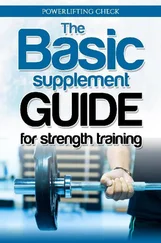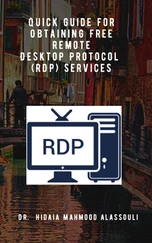In future, our Smart Factory in Russia will make it possible ensure the closest possible connection between people, machines and corporate resource planning systems, as well as the precise interaction of all components of the value creation chain in real time, using the latest manufacturing technologies such as 3D printing, augmented reality, robot technology and autonomous freight-handling vehicles. Our goal is to achieve the highest level of automatic regulation and optimization of all processes as part of a closed, regulated system with full transparency and efficiency of value creation flows. At the same time, we will create excellent working conditions for our employees thanks to the creation of the Smart Factory. In this way, we will achieve a high degree of flexibility and speed of delivery to clients, with growing productivity and cost efficiency in Russia.
In parallel with the creation of the Smart Factory, Wilo plans to establish a new level of closeness to the client in digital Russia. Digitalization will connect the world of clients and the world of Wilo and will allow individual contact with each group of clients and shareholders, with individual marketing in real time. Digital CRM makes it easier to set priorities in client relationships, projects and offerings, ensures a high level of transparency on the Russian market and among its participants, and can thereby provide substantial support for work with key clients.
In the development of a new, digital business model, as the next step Wilo defines and will develop the appropriate lines of business. In doing so, we will also rely on startups. Wilo is already conducting a systematic analysis and monitoring of young, innovative enterprises. The objective is to integrate the technologies of the future and digital business models into existing business activity. In this way, we will in future create new innovative spaces in Russia, so that using products, systems and solutions we can meet the technological challenges of the future.
Digital transformation will not be an obstacle for Wilo. Thanks to targeted, longterm investments we can confidently take advantage of our chances and realize the potential of future transformations.
VUCA is a chance for Russia!
Hartmut Maier, General Manager, OOO Benteler Automotive, a Division of Benteler for Northern Europe
Christoph Siegel, Managing Partner, CON MOTO Consulting Group GmbH
1. Introduction, background
If you look at the development of Russian industry since the breakup of the Soviet Union, you gain a better understanding of its current situation and the decisions and measures being taken by the Russian authorities.
Over its 70-year existence, the Soviet Union learned to produce most of the necessary high technology and basic stable goods and services itself. While supporting the industrial development of other socialist countries such as China, for example, the Soviet Union also proved in the 1950s and 1960s that it could independently develop products and know-how in full measure and successfully export them.
The country’s political structures, society and market experienced radical change at the end the 1980s, which gave rise to chaos in the countries left after the breakup of the USSR. This event was followed by deindustrialization caused primarily by the breakdown of the production chains that had been built over the past 70 years inside the USSR and the socialist camp as well as by competition and gradual capture of the market by Western products that started at the same time.
The neoliberal doctrine of the Yeltsin era in the 1990s was focused exclusively on the power of the free market and, therefore, did not leave any room for traditional industry, which was fighting with the consequences of the disintegration of industrial ties, new competition and privatization. The inefficiency of state structures, corruption and the brain drain merely aggravated the situation. It is safe to say that the ramifications for the affected industrial regions and for the country as a whole were catastrophic.
By the early 2000s not only had the existing industrial base been destroyed, but a psychological deindustrialization had started to take hold. This coincided with the international spirit of the times, as the entire world strove to reduce added value and earn a fast buck through trading in commodities and financial services. Russia followed this example, and its healthy value creation structure was disrupted. The entire country learned that trade and services, and not production, are the path to easy money.
This trend is still having a profound effect today. That being said, the psychological effect may be even deeper than the impact on the national economy and technology.
2. Government programs/strategies
Since the early 2000s, the government has been taking measures to stop any further disintegration of Russian industry and to gradually bring the country up to a competitive international level. Based on the experience of the Soviet period it was clear that the size of the sales market plays a decisive role in the revival of domestic industry.
The industrial sectors related to strategic raw materials were the priority for the Russian Government. This means, first and foremost, fossil fuels. After a short period of privatization, they once again ended up almost entirely under the direct or indirect control of the Russian Government and under state supervision, and accounted for more than 50 % of Russian GDP.
Then you have the manufacturing and processing sector, including the automotive industry, which is designated as a key industrial sector of strategic importance.
Due to favorable oil price trends during the period from 2000–2014 and the related revenues of the Russian state over these 15 years, the key industrial sectors stabilized and were backed by promising investments and international knowhow.
In this regard, the automotive industry has benefited from several state programs, the most famous being Resolution No. 166 of the Russian Government dated 29 March 2005 on the localisation of automobile manufacturers. Together with various regional programs to support the localisation of production, the country managed to create a situation where nearly all the best-known international automobile manufacturers have modern production facilities in Russia that meet all international standards. Twenty automotive manufacturers are concentrated in the European part of Russia, in the cities of Togliatti, Elabuga, Naberezhnye Chelny and Ulyanovsk in the Volga Region, as well as in Nizhny Novgorod, Saint Petersburg, Moscow, Kaluga and Kaliningrad.
The installed production capacity of all truck and automobile manufacturers together equals 3.7 million vehicles a year. However, utilization has reportingly fallen from nearly 65 % in 2012 to around 35 % in 2016 and recovered to just about 50 % today. The decision of first GM in 2018 and then Ford in 2019 to close their production activities in Russia is certainly somehow connected to the low utilization levels.
An important component of Resolution No. 166 concerns the customs privileges on the import of parts for the manufacture of vehicles through semi-knockeddown (SKD) and complete knock-down (CKD) assembly. In this regard, defined production capacities must be built and maintained in order to achieve the set level of localisation by the established deadlines. To support this process for the automotive industry, Resolution No. 566 of the Russian Government dated 16 September 2006 was passed, which also applies to the achieved level of localisation for certain products and technologies that are also eligible for customs privileges on the import of the materials and parts necessary to manufacture auto components and units.
Читать дальше












